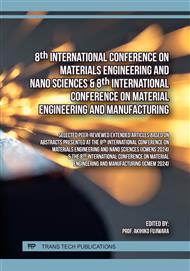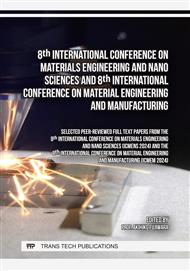p.37
p.45
p.53
p.59
p.65
p.71
p.79
p.87
p.93
Optimization of Multi-Objective Response of FDM Fabricated PLA Parts with Morphological Investigation on the Effects of 3D Printing Parameters
Abstract:
Additive manufacturing (AM) is a process of generating prototypes or usable parts with minimum amount of material, technology, and time. The forerunner for technology and material for AM are Fused Deposition Method (FDM) and Polylactic Acid (PLA), respectively. There are numerous works in FDM devoted to studying the effect of processing conditions on the part strength. However, no significant effort has been made to develop an understanding of the effects of the nozzle diameter, extrusion temperature, infill percentage, infill pattern, and the number of outer shells in minimizing print time & raw materials without sacrificing significant part strength. This research intends to conduct a multi-objective approach in identifying significant factors that will affect the target response. It was observed that nozzle diameter, wall thickness and infill density are the significant factors that may affect strength, build time and material consumption. In Scanning Electron Microscope (SEM) results, it was observed that the more voids seen at fracture would result to lesser strength. Lastly, a regression equation was generated to guide future researchers and end-users in predicting response in consideration of the factors (or parameters) involved in this experiment.
Info:
Periodical:
Pages:
65-70
Citation:
Online since:
September 2024
Authors:
Price:
Сopyright:
© 2024 Trans Tech Publications Ltd. All Rights Reserved
Share:
Citation:



